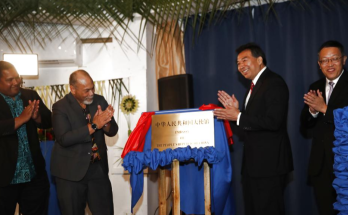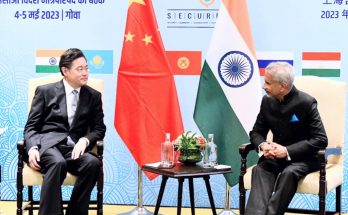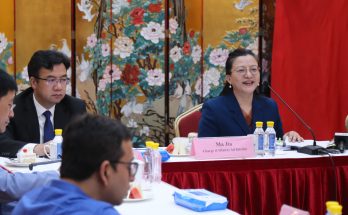While no high level bilateral political visit has taken place between India and China since Premier Wen Jiabao’s visit to New Delhi in December 2010, the taking over by the fifth generation of leadership in China since November last year could usher in a fresh start for both countries.
The Xi Jinping-Li Keqiang leadership is expected to last for a decade. In its foreign policy guidelines, the work report issued at the 18th National Party Congress of the Communist Party of China held last year stated that China would protect its “core security interests”, follow an “independent foreign policy”, work for building a “well-off society by 2020”, emphasise on acquiring soft power, and play a role “commensurate with international standing” of China.
While no specific wording on India is available in this report, these phrases and formulations have broader implications for India in the next five years.
Firstly, since Tibet had been configured as “core” security interest of China, it has its attendant implications for India, specifically as it is linked to the Tibetans (about 1,20,000 of whom live in India) and on the issue of territorial integrity (as China had been configuring Arunachal Pradesh as “southern Tibet” since at least 2005). The visit of Xi Jinping (who was then vice-president) to Tibet in July 2011 and his observation then that the region is of strategic importance to the country indicated that during his leadership, Tibet is likely to receive more funding in improving military modernisation and logistics support. Already, last year saw more than 20 military exercises in Tibet, including long-range aviation platforms.
With India announcing the formation of a Strike Corps in response to China’s military modernization in Tibet and testing of Agni V in April 2012, followed by the January 27, 2013 submarine launched ballistic missile test as a part of the 2009 INS Arihant project, the stage is set for an “armed coexistence” as Mao Zedong said just prior to the 1962 border clashes.
Yet, the three main interactions between senior officials in the last few months indicate de-escalation and a desire for better relations by the leadership of the two countries. India’s National Security Advisor Shivshankar Menon visited Beijing in the middle of the political transition last November. This was followed by his counterpart Dai Bingguo’s visit to New Delhi early this year (as a part of the BRICS preparatory meeting on security issues) with a message from Xi Jinping that bilateral relations could witness strategically significant developments in this decade. Also, Defence Secretary Shashikant Sharma visited Beijing January 14-15 this year to continue the 5th annual dialogue between the two militaries. Surprisingly, the Chinese side reportedly termed the 1962 border clashes – the 50th anniversary of which fell last year – as “unfortunate” and stressed that both militaries should focus on peace and tranquility in the border areas, including no night patrolling by troops, limited hot pursuit and no firing. Although no concrete results came out of this interaction – such as demilitarization which could have boosted confidence among both countries – the visit by the Indian delegation came in the backdrop of the Japan-China tensions on the Senkaku islands dispute.
Secondly, another significant trend influencing the bilateral equations between the two countries is the trajectory of their economies. While the growth rates are falling for both China and India due to the eurozone crisis, both countries are still economic powerhouses in the region. China is eyeing the huge consumer market of India – which had not witnessed any drastic reduction of late. While China in its 12th Five Year Plan had prioritized that domestic consumption will be expanded, it is a tall order in the short term and Beijing is looking to India and other economies, which provide lucrative markets for manufactured goods and capital exports.
The recent “Go West” strategy of China should be seen in this context. One could also expect more investments from China in expanding connectivity with the South Asian region in the coming years. Already, China had agreed in principle to take over Gwadar port in Pakistan, besides expanding the Karakoram Highway. China had also completed the first phase of Hambantota port construction in Sri Lanka, while expressing interest in Chittagong port in Bangladesh.
In India as well, China’s entry into the power and telecommunications sector is growing at a rapid pace. India is also poised to explore “pressure points” on China with its investments in the energy sector in the South China Sea. The OVL, the overseas arm of the Oil and Natural Gas Commission (ONGC), had resent its rigs to the 128 Block controlled by Vietnam. For Xi Jinping – who is in charge of emergency rescue missions in the Politburo – the South China Sea dispute could test his skills. In this context, the reported deal between India and China on the sidelines of the G-20 meeting in Mexico regarding possible allotment by China of a prospective energy block to the Indian company needs to be studied closely. This acquires an added significance in view of the coercive diplomatic postures by China on the Indian Navy, followed by the then External Affairs Minister S.M. Krishna’s categorical assertion that South China Sea is not China’s sea.
Thirdly, the re-iteration of an independent foreign policy posture by China and India provide many opportunities to work for mutually beneficial issues. With declining economic growth rates (7.7 percent for China and 5.3 for India in 2012) – in the midst of global economic slowdown and restrictions by the West on imports from China and India – both these countries are likely to play a greater role in the multilateral responses on a host of issues such as trade protectionism and the creation of a development bank. Indeed the meeting between India’s Prime Minister Manmohan Singh and China’s President Xi Jinping at the BRICS meeting in Durban March 26-27 is likely to give more concrete shape to some of these proposals and initiatives.
(Srikanth Kondapalli is Professor in Chinese Studies at Jawaharlal Nehru University, New Delhi. He is also an Honorary Fellow at Institute of Chinese Studies, Delhi and Research Associate at Centre for Chinese Studies, University of Stellenbosch, South Africa. He received the K. Subrahmanyam Award in 2010 for Excellence in Research in Strategic and Security Studies.)
Author Profile
Latest entries
 DiplomacyJuly 29, 2019South China Sea Imbroglio: Policy Options
DiplomacyJuly 29, 2019South China Sea Imbroglio: Policy Options China ConnectJuly 28, 2017Rising India & Rising China: A medium-term projection
China ConnectJuly 28, 2017Rising India & Rising China: A medium-term projection DiplomacyDecember 9, 2015PM Abe’s visit: Opening new vistas in India-Japan special ties
DiplomacyDecember 9, 2015PM Abe’s visit: Opening new vistas in India-Japan special ties Africa InsightsDecember 3, 2015A Tale of Two Players in Africa: Indian & Chinese responses
Africa InsightsDecember 3, 2015A Tale of Two Players in Africa: Indian & Chinese responses







